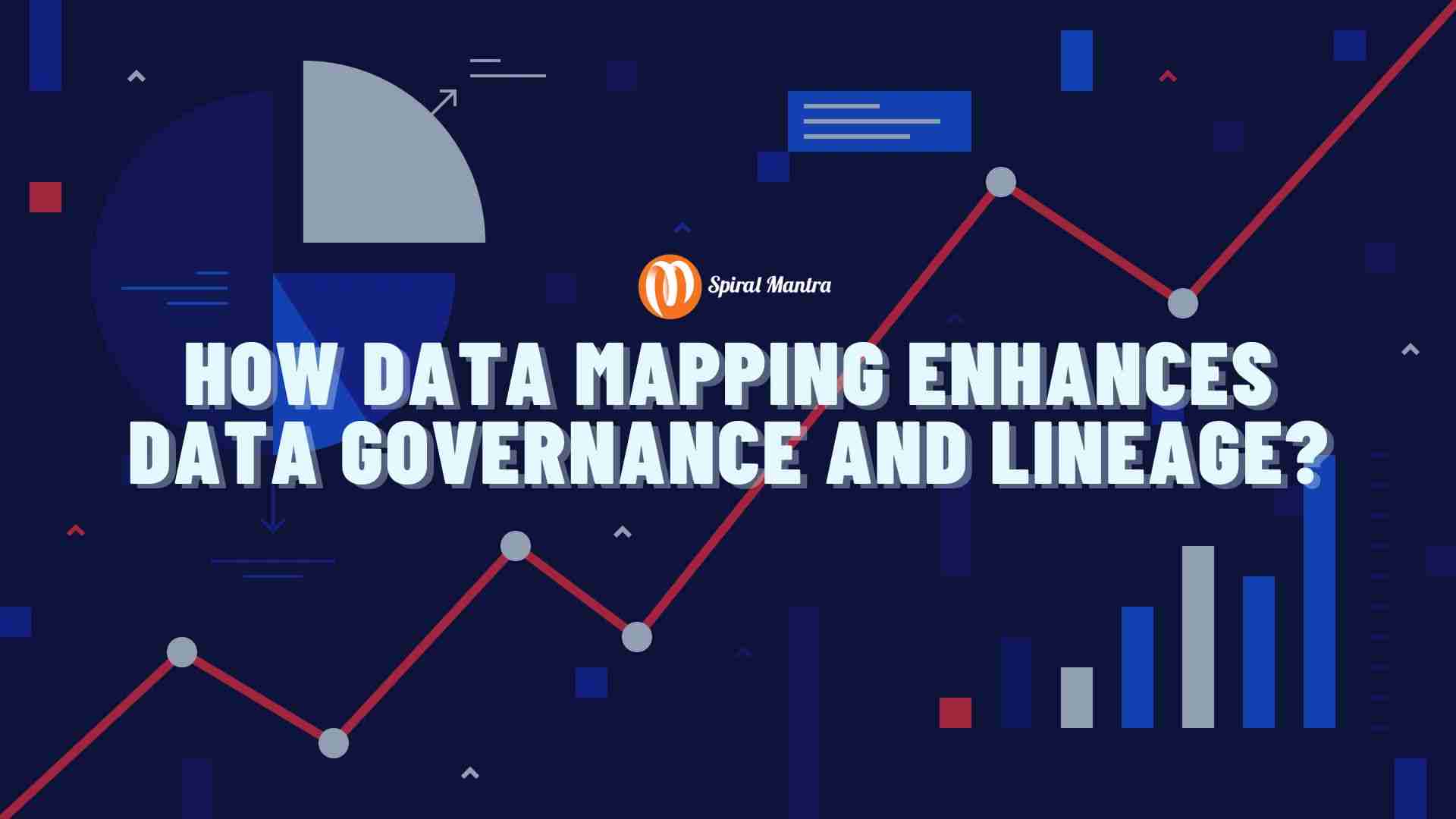
Do you think data can transform your life? Yes, of course it can. You cannot survive for a single day without the involvement of data or data science. Using data science and data analytics in a company or startup is very prominent but before utilizing it you need to understand some of the data terms like data mapping, data governance, and lineage. Data Science can impact modern businesses prominently and can make them achieve greater heights. Data Mapping is the process of managing the movement of data inside an organization. By matching fields from one source to data fields in another, information is linked across several databases and data models. It may appear simple, but it can be intricate and needs close attention to detail.
Benefits of Data Mapping
- It improves comprehension and management by giving data linkages a visual representation.
- It is essential for preserving the integrity and quality of data across several platforms.
- Clearly delineating personal and sensitive data facilitates compliance with data protection rules.
- Roles and duties within data governance frameworks are defined with the help of this procedure.
- Initiatives for data integration, migration, and transformation are supported by data mapping.
- It uses AI that can reshape supply chain management and many other sectors.
Metadata and its Importance
Metadata is essentially “data about data”. It makes raw data more comprehensible and useful by giving it context, organization, and meaning. Aspects like ownership, usage permissions, format, date of creation, data source, and ownership are all included in metadata. It acts as the foundation for data governance, giving companies the ability to uphold data quality, enforce compliance, and enforce regulations.
Data lineage and governance
The procedures and guidelines placed on an organization’s data maintenance are referred to as data governance. Throughout the data lifecycle, data governance entails defining data owners, business terminology, rules, policies, and processes. On the other hand, data lineage is an essential component of data governance. It offers a thorough understanding of the data flow throughout a company.
Ways in which data mapping can improve migration and integration of data
By defining precise guidelines for data merging or migration between systems, data mapping expedites the data integration and migration processes. This guarantees that following such procedures, the data stays coherent and usable. Additionally, it lowers the possibility of corrupted or lost data during the transfer, which is essential for maintaining operational continuity.
- Establishes transformation rules to guarantee data consistency throughout integration.
- Reduces the possibility of errors or data loss during migration.
- Facilitates the unification of data from various sources into a single format.
- Permits smooth data transfer between cloud and on-premises settings.
- Minimizes the time and effort needed for initiatives involving data migration and integration.
What is the relationship between behavioral science and data mapping in data governance?
Data mapping influences how people engage with data within an organization, which is how it intersects with behavioral science. Designing data governance policies that are more likely to be embraced and adhered to can be influenced by an understanding of these interactions. It is also possible to employ behavioral insights to promote best practices in compliance and data management.
- Aids in the creation of user-friendly data governance instruments that encourage adherence.
- Can help training programs to enhance the way people handle data.
- Favors the development of rewards for appropriate data management procedures.
- Makes it possible to find trends in behavior that could affect the quality of the data.
- Aids in the creation of governance guidelines that complement organic user workflows.
Implementing Data Mapping
To efficiently collect, organize, and use information inside an organization’s data environment, data mapping requires strategic strategy, technological tools, and a strong infrastructure. The following provides comprehensive information about the essential elements and procedures involved in putting data mapping into practice:
- Metadata repositories: The foundation of metadata management are metadata repositories, which offer a single location for the archiving and retrieval of metadata data, including data mappings. Furthermore, these repositories can be relational databases, specialist metadata management platforms, data catalogs, or any combination of these.
- Mapping tools: Creating, organizing, and displaying data maps is made easier with the use of specialist tools and software when implementing data mapping. From basic graphical user interfaces to sophisticated mapping automation platforms, these solutions are available.
- Data lineage tracking: Data mapping and data lineage tracking are related. Data lineage tracking entails recording and documenting data flow between various systems and procedures. Robust infrastructure and interaction with several data sources and systems are also necessary for its tracking.
- Governance and security: To guarantee the privacy of metadata information, data mapping calls for strong governance and security measures. Organizations also need to set up rules and processes for handling metadata lifecycle management, data stewardship, and access controls.
Conclusion:
In a time when data is king, metadata management becomes an essential discipline for businesses looking to properly leverage the potential of their data assets. Data mapping can improve the performance, functionality, and user experience of your mobile apps. Furthermore, data mapping, as the cornerstone of metadata management, gives companies the confidence to safely traverse data governance and lineage. Through thorough mapping that reveals the nuances of the data landscape, firms may harness the full potential of their data to spur innovation, productivity, and expansion.